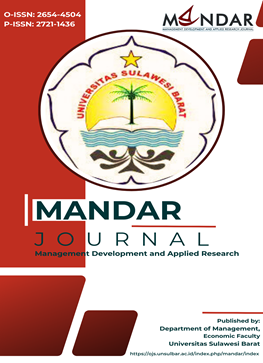Performance Information in Local Government Strategy: An Institutional Isomorphism Approach
Main Article Content
Abstract
This study aims to analyze how local government institutions utilize performance information for strategic decision-making, specifically in implementation and evaluation phases, through the lens of institutional isomorphism. The research employs a qualitative method with a case study approach in the Special Region of Yogyakarta, Indonesia. Primary data were collected through in-depth interviews with eight officials selected using purposive sampling. Thematic analysis was conducted following Braun & Clarke’s model. Findings reveal that performance information is often used symbolically due to external pressures rather than for substantive strategic improvement. Coercive isomorphism, driven by regulatory compliance, is the most dominant factor, followed by mimetic and normative pressures. This study theoretically reinforces the relevance of institutional isomorphism and practically highlights the importance of strengthening internal capacity for strategic and sustainable performance management. Novelty of this study contextualizes institutional isomorphism within Indonesia's decentralized local governance and presents qualitative evidence on the distinction between symbolic and substantive use of performance information
Article Details

This work is licensed under a Creative Commons Attribution 4.0 International License.
References
Anlesinya, A., Amponsah-Tawiah, K., Dartey-Baah, K., Adeti, S. K., & Brefo-Manuh, A. B. (2023). Institutional Isomorphism and Sustainable HRM Adoption: A Conceptual Framework. Industrial and Commercial Training, 55(1), 62–76. https://doi.org/10.1108/ICT-03-2021-0013
Braun, V., & Clarke, V. (2021). Thematic Analysis: A Practical Guide. In Qualitative Research in Psychology (Vol. 3, Issue 2). SAGE Publications. https://doi.org/10.1191/1478088706qp063oa
Creswell, J. W. (2023). Research Design Pendekatan Kualitatif, kuantitatif and Mixed (A. Fawaid, Trans.; cetakan 8). Pustaka Pelajar.
DiMaggio, P. J., & Powell, W. W. (2000). The Iron Cage Revisited Institutional Isomorphism and Collective Rationality in Organizational Fields. Economics Meets Sociology in Strategic Management, 8, 143–166. https://doi.org/10.1016/S0742-3322(00)17011-1
Dooren, W. Van, Bouckaert, G., & Hallingan, J. (2015). Performance Management in the Public Sector (2nd Edition). Routledge.
Heriyanto. (2018). Thematic Analysis Sebagai Metode Menganalisa Data untuk Penelitian Kualitatif. Jurnal Kajian Budaya, Perpustakaan Dan Informasi (Anuva), 2(3), 317. https://doi.org/10.14710/anuva.2.3.317-324
Kuhlmann, S., & Bouckaert Geert. (2016). Local Public Sector Reforms in Times of Crisis. Palgrave Macmillan UK. https://doi.org/10.1057/978-1-137-52548-2
Manes-Rossi, F., Nicolò, G., & Argento, D. (2020). Non-Financial Reporting Formats in Public Sector Organizations: A Structured Literature Review. Journal of Public Budgeting, Accounting & Financial Management, 32(4), 639–669. https://doi.org/10.1108/JPBAFM-03-2020-0037
Nurmillah, Nawi, R., Dahlan, & Mahmud, M. N. (2024). Isomorphism Dalam Transformasi Digital Inovasi Pelayanan Publik. Journal Publicuho, 7(4), 2083–2090. https://doi.org/10.35817/publicuho.v7i4.567
Pageno, A. M. (2020). Pengukuran Kinerja Strategis, Komitmen Manajemen, Penggunaan Informasi Kinerja, Dan Kinerja Pemerintah Daerah: Perspektif Isomorfisma Kelembagaan (Studi Pada Pemerintah Daerah Istimewa Yogyakarta) [Universitas Gadjah Mada]. https://etd.repository.ugm.ac.id/penelitian/detail/185603
Pal, A., & Ojha, A. K. (2017). Institutional Isomorphism due to the Influence of Information Systems and Its Strategic Position. Proceedings of the 2017 ACM SIGMIS Conference on Computers and People Research, 147–154. https://doi.org/10.1145/3084381.3084395
Peraturan Menteri Dalam Negeri Nomor 86 Tahun 2017 Tentang Tata Cara Perencanaan, Pengendalian Dan Evaluasi Pembangunan Daerah, Tata Cara Evaluasi Rancangan Peraturan Daerah Tentang Rancangan Peraturan Daerah Tentang Rencana Pembangunan Jangka Panjang Daerah Dan Rencana Pembangunan Jangka Menengah Daerah, Serta Tata Cara Perubahan Rencana Pembangunan Jangka Panjang Daerah, Rencana Pembangunan Jangka Menengah Daerah, Dan Rencana Kerja Pemerintah Daerah, Pub. L. No. Nomor 86 (2017).
Peraturan Menteri Pendayagunaan Aparatur Negara Dan Reformasi Birokrasi Nomor 53 Tahun 2014 Tentang Petunjuk Teknis Perjanjian Kinerja, Pelaporan Kinerja Dan Tata Cara Reviu Atas Laporan Kinerja Instansi Pemerintah, Pub. L. No. Nomor 53 (2014).
Pollanen, R. M. (2016). Performance Measurement in Municipalities: Empirical Evidence in Canadian Context. International Journal of Public Sector Management, 18(1), 4–24. https://doi.org/10.1108/09513550510576125
Santoso, A. B. (2021). Penggunaan Informasi Kinerja Pelaksanaan Anggaran Pada Satuan Kerja Kementerian/Lembaga. ABIS: Accounting and Business Information Systems Journal, 9(4). https://doi.org/10.22146/abis.v9i4.70469
Wulanningrum, P. D., Akbar, R., & Sari, M. R. (2020). Isomorphism, Human Resource Capability and Its Role in Performance Measurement and Accountability. The Journal of Asian Finance, Economics and Business, 7(12), 1099–1110. https://doi.org/10.13106/jafeb.2020.vol7.no12.1099

